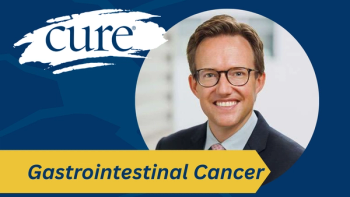
Tumor Treating Fields Safe as Frontline Therapy in Unresectable Pancreatic Cancer
Tumor Treating Fields were determined safe to use as a fronline therapy for unresectable pancreatic cancer.
A preliminary safety and efficacy trial of a device using tumor treating fields (TTF) administered to patients with unresectable pancreatic cancer found that the treatment was tolerable and safe when combined with Gemzar (gemcitabine), according to a poster presented at the 2016 annual meeting of the American Society of Clinical Oncology (ASCO), a gathering of over 30,000 oncology professionals in Chicago.
The single-arm study explored the drug-device combination as a frontline therapy. It continued with a second cohort to which Abraxane (nab-paclitaxel) was added.
TTF, administered by the Optune device, has been approved by the US Food and Drug Administration (FDA) for use in glioblastoma, but this was the first trial to look at the electric field treatment in pancreatic cancer patients, according to study authors.
“These fields cause a small vibration in the cancer cell, and when it’s going to divide, the cell is very sensitive to this,” explained Fernando Rivera, head of the department of medical oncology at the Hospital General Universitario Marques de Valdecilla in Spain.
For the cohort, progression-free survival (PFS) at six months was 56 percent. The one-year survival rate was 55 percent and the longest period of survival was two years, according to Rivera.
Methodology
Twenty advanced pancreatic cancer patients were enrolled in the study, 13 of whom had distant metastases, testing TTF with weekly Gemzar. Half the patients experienced skin toxicity from the device, but only two of those were grade 3, and both resolved.
While a total of 14 patients had serious adverse events, no serious events were attributable to the TTF aspect of their treatment, the abstract stated. The results were compared to published data for Gemzar alone. “We do have added toxicity in the form of skin irritation, which is sort of like contact dermatitis, but it can be handled pretty easily with topical ointments,” explained Eilon Kirson, chief science officer of Novocure, in Jersey Isles, United Kingdom.
The median PFS in the cohort was 8.3 months. PFS for those with locally-advanced disease was 10.3 months and 5.7 months in metastatic patients. Median overall survival (OS) was 14.9 months. The rate of one-year survival was 86 percent in those with locally-advanced disease, and 40 percent in metastatic patients. Thirty percent of evaluable tumors had a partial response, while 30 percent had stable disease.
New Iteration Intended to Ease Compliance with Less Bulky Device
While the study focused on safety and efficacy, compliance with TTF was measured at 78 percent. Participants wore the device an average of 14 hours per day, with a median duration of five months.
“This prototype of the initial device is like the initial cellphones, which were very big,” added Rivera, who presented the poster.
“Glioblastoma data shows a threshold for optimal efficacy of Optune, which is 75 percent compliance, or an average of 18 hours a day,” said Kirson.
“We always continuously strive to improve compliance. It’s an important factor, because our treatment doesn’t have a half-life, so patients really need to keep the activity on. For example, the device has a compliance log that records the hours per day of its use, and we also have device support specialists who assist the patient throughout their therapy, even with lifestyle considerations, such as how do you carry it around, what do you do to hide things if you don’t want to show the device,” Kirson added.
The manufacturer has submitted an FDA application for a second generation of the device, which is half the size and weight of the first generation, that is designed for use by glioblastoma patients. However, that device is not expected to be used in pancreatic cancer trials.
“We’re still using the first-generation device for the second cohort, because for torso application of TTF we need a significantly higher power, because we’re distributing the energy to a larger volume. The power consumption is too high, and the battery in the second generation of Optune won’t last long enough, so we’re still using the six-pound device,” explained Kirson.
As mentioned, researchers have finished accruing patients for the second cohort, with an expected follow-up of six months. “We are planning to expedite development. With the data we have, we are already planning a phase 2 program,” Kirson said.
Preliminary data for the glioblastoma patient study may be presented in October 2016 at the ESMO Annual Congress in Copenhagen, Rivera noted.




